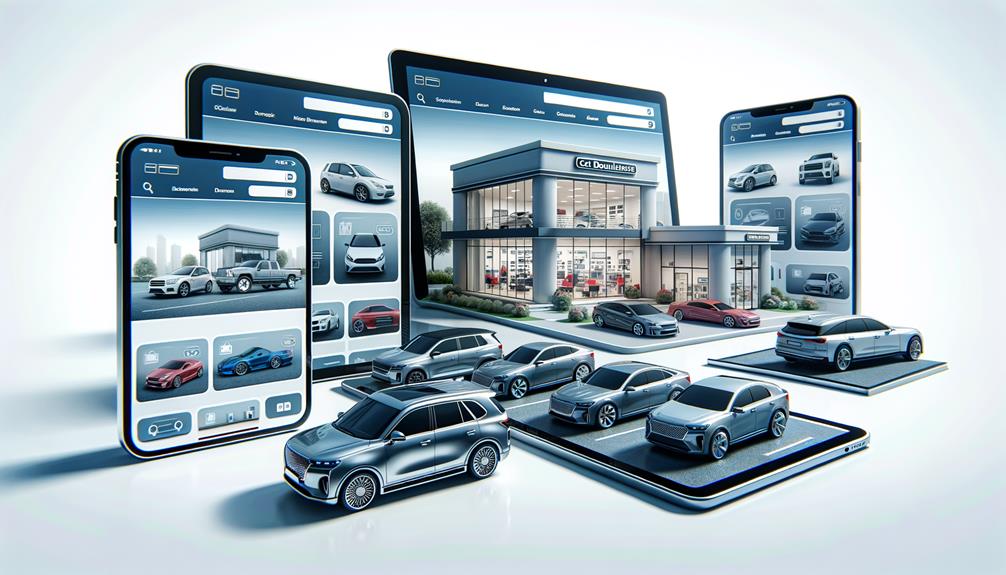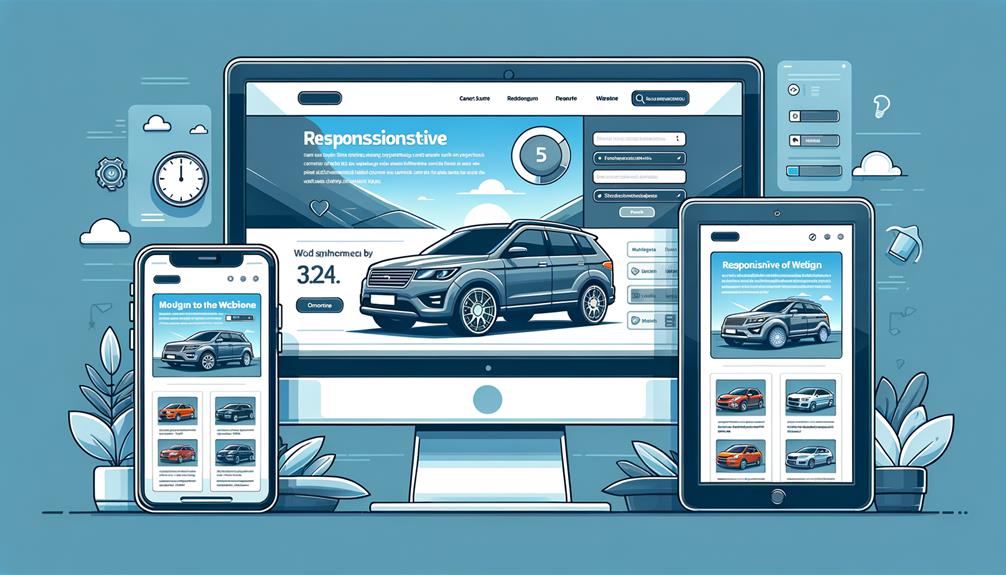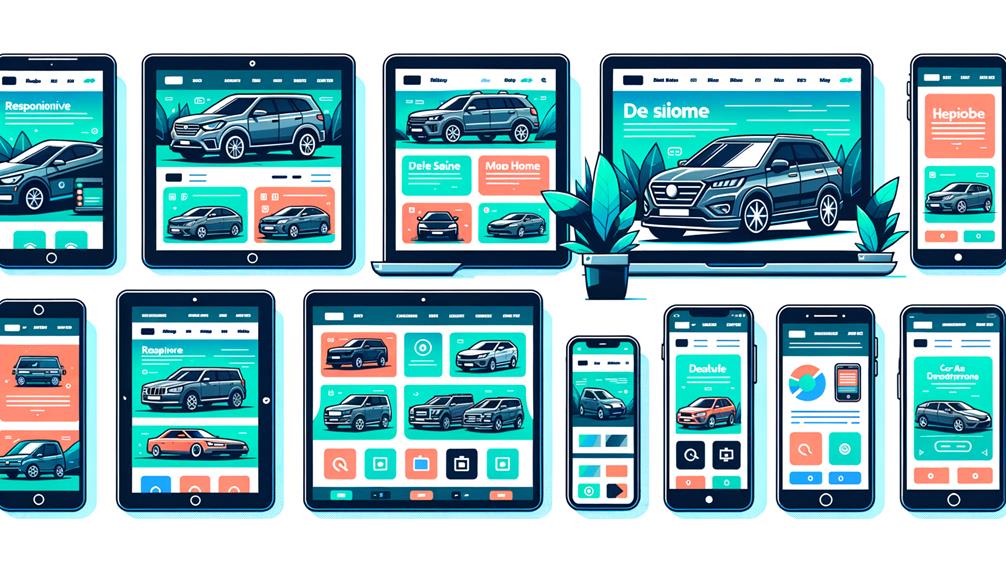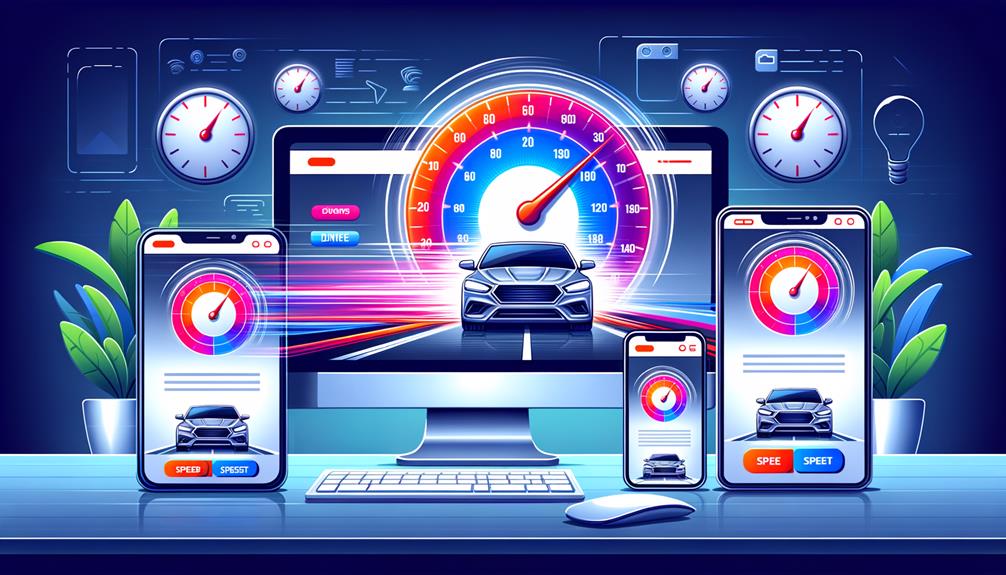Looking at recent trends, it's clear that customer habits are changing. A growing number of people are using a variety of devices to search for their next car online. This presents a unique hurdle for car dealerships – how can they provide an effortless user experience on every platform? The solution is responsive web design. This is a design strategy that adjusts a website's layout based on the screen size of the device. This enhances the browsing experience for the user. But what does this mean for a car dealership's online presence and their overall business performance? Let's have a closer look at this issue and uncover its potential benefits.
Understanding Responsive Web Design
So, let's talk about responsive web design. It's like magic – it lets your website automatically adapt to fit any screen size or device, guaranteeing a smooth and user-friendly experience across the board. This is super important in the car industry, where a top-quality online shopping experience could be the deciding factor for potential buyers.
Our main focus? Automotive website design, specifically for auto dealerships. We get that as a car dealer, you want your website to perform perfectly on all devices, not just desktop computers. That's where responsive design steps up. With it, there's no need for a separate mobile site, making sure your website always looks its best, no matter the screen size or device being used.
But there's more. Responsive design also has a major role in SEO. Google's algorithm takes into account mobile usability, and sites that aren't responsive can take a hit in search rankings. With responsive web design, your car dealership website is not only friendly to all mobile devices but also gets a thumbs up from SEO standards. This helps you stay ahead of the game, keeping you relevant and easy to find in our fast-paced digital world.
Importance for Automotive Dealerships

Let's have a chat about the value of responsive web design for automotive dealers and why it's such a big deal.
Responsive web design holds a lot of weight when it comes to the world of automotive dealerships. It's not just about improving the user's interaction with the site, but it's also about upping the game in online marketing.
Let's break this down with four key points:
- Customer Habits: Most car buyers hop between devices while hunting for their next ride. Having a website that adapts to any device ensures a smooth and consistent buyer journey.
- SEO Benefits: Google has a soft spot for dealership websites that are responsive, rather than those with a separate site for mobile. So, this kind of design can give your SEO a lift, making it a breeze for potential customers to find you.
- Improved User Interaction: With responsive web design, users won't need to pinch or zoom on smaller screens. It's all about making the mobile experience as easy as pie.
- Staying Ahead: The mobile device trend isn't slowing down. If your dealership's site is responsive, you're already one step ahead of those who haven't jumped on this bandwagon yet.
To sum it up, it's pretty clear that responsive web design holds a significant place in the world of automotive dealerships today.
Key Elements of Responsive Design

Let's chat about some critical components of responsive design. This tool is vital for your dealership website, as it allows it to adapt smoothly to any device's screen size, ensuring a smooth browsing experience for your users. It's not just a bonus feature; it's what web design is moving towards. Google even recommends responsive websites as the best approach in the industry. Therefore, for car dealership websites to succeed in the current market, heavily influenced by mobile usage, it's vital to adopt this design approach.
There are three primary components of responsive design that your site should include:
| Component | Explanation | Advantage |
|---|---|---|
| Fluid Grids | This refers to a website layout that uses relative sizing, enabling it to fit any screen. | It ensures your site is accessible on any device. |
| Flexible Images | Images on the site automatically resize to fit the screen they're displayed on. | This improves the user experience and encourages engagement. |
| Media Queries | This is a CSS technology that adjusts the layout of the site based on the device's capabilities. | It makes sure your site maintains a professional appearance across all platforms. |
Implementing Responsive Design Strategies

Let's talk about implementing responsive design strategies for your car dealership website. To do it right, we need to really understand industry best practices and trends. As car dealers, we have to think about how car buyers are interacting with our digital marketing platforms, especially when they're using mobile devices. When we make our websites responsive, it doesn't matter if someone is looking at our site on a computer or a phone – either way, they'll have a great user experience.
So, how do we make this happen? Here's what we're suggesting:
- We should work together with top-notch web developers who can weave responsive design techniques into our sites. This way, our websites will load quickly and work well on any platform.
- We need to put our site through its paces on different devices and browsers. This will help us spot any issues and make sure all users get the best experience possible.
- Let's make the most of the latest responsive design frameworks and tools. This will make our site flexible enough to adapt to different screen sizes and resolutions.
- We have to keep an eye on how our website is performing and crunch the numbers regularly. This will help us find areas where we could get better.
Making our websites responsive isn't a one-off job – we need to keep at it. But if we follow these strategies, we'll be able to meet the needs of modern car buyers and keep up with the latest in the digital world.
Evaluating Website Performance

Ensuring our websites stay snappy is key, but it's equally crucial to check their performance regularly to confirm they're serving our customers as effectively as possible. As car dealers, we're committed to delivering top-quality user experience, and this is where assessing website performance comes into play.
We kick things off by checking how fast our sites load. No one likes a slow website – it leads to frustrated visitors and can even lower our position in search results. Keeping an eye on how users interact with our site and the rate at which they turn into customers helps us understand if our content is hitting the mark.
Thanks to website analytics tools, we can follow the flow of website traffic and track user activity. This offers us priceless insights into which parts of our website need a little extra attention. Whether it's a standalone website or one that adjusts to the device it's viewed on, we make sure to run tests on various devices, browsers, and internet connections to guarantee a top-tier user experience.
We also use A/B testing to decide which design and content work best. Ongoing fine-tuning of website performance is a must. This means taking care of technical glitches, enhancing content, and staying in line with what's currently considered best practice in the industry. And of course, we always stick to our Privacy Policy and Terms, creating a safe space for our valued customers.
Frequently Asked Questions
Why Are Dealership Websites so Slow?
It's not uncommon to find dealership websites chugging along at a snail's pace. What's the culprit behind this? Often, it's due to a combination of hefty image files, too many scripts running, and server troubles. However, there's a remedy for this. By keeping a close eye on the website's performance and making necessary tweaks and adjustments, we can give these sites quite a speed boost.
How to Build a Car Website?
Creating a car website? It's all about the user experience! First, we'll work on a design that's easy to navigate and visually appealing. Then, we'll bring in some extensive car databases to provide our visitors with all the information they're after. And, of course, we can't ignore the fact that most of our users will be browsing on their phones, so mobile optimization is a must.
We'll add in an online booking system to make things easier for our users, and we're going to make sure the website runs smoothly and quickly. This way, our visitors can find what they need without any frustrating delays. Remember, the key to a great website is keeping things simple, fast, and user-friendly. Let's get to it!

